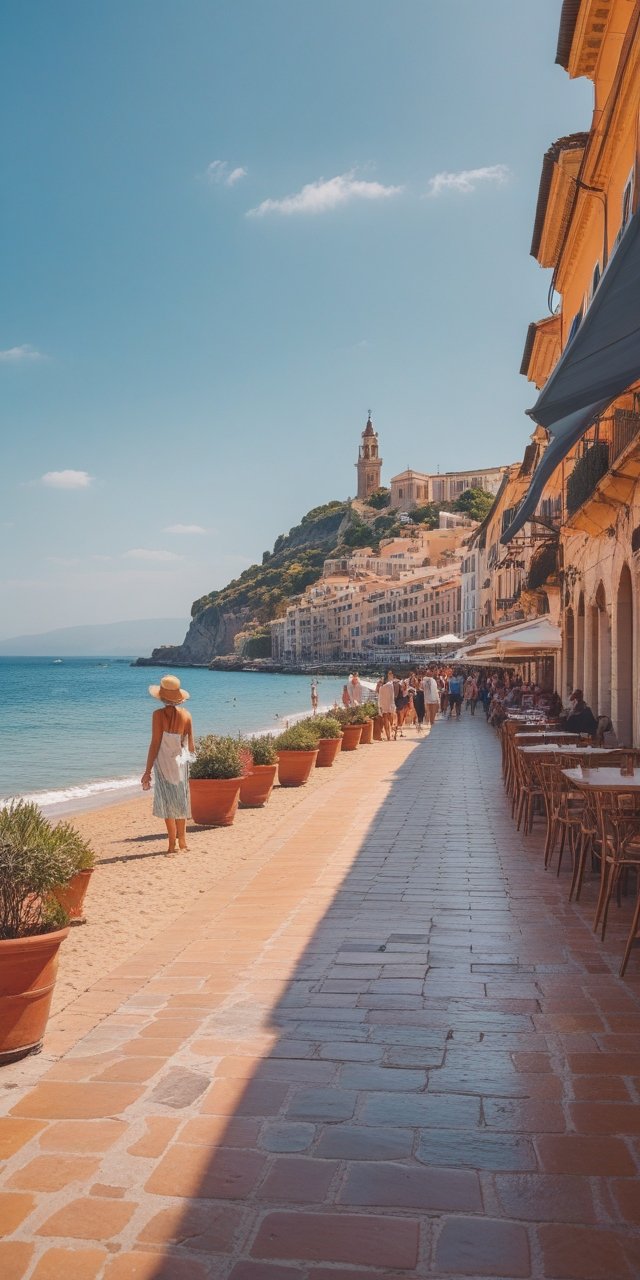Winter Travel Inspiration: Discovering Japan’s Magical Season
March 28, 2025 | by alwaled

Introduction to Winter in Japan
Winter in Japan is a season characterized by a captivating transformation of landscapes and a rich cultural tapestry that unfolds under the delicate embrace of snow. The arrival of winter brings with it a serene beauty, as iconic landmarks and rural vistas become blanketed in a glistening layer of frost, offering a unique backdrop for both residents and tourists alike. This period, typically spanning from December to February, signifies more than just a change in weather; it encompasses a time of reflection, celebration, and connection to traditional practices.
One of the most intriguing aspects of winter in Japan is how it highlights the inherent beauty of nature alongside culturally significant festivals and customs. The stark contrast between the white snow and the vibrant colors of traditional attire during ceremonies and festivals like Shinto rituals creates a striking visual resonance. Furthermore, winter sports, such as skiing and snowboarding, are integral to Japan’s winter tourism, attracting enthusiasts from around the globe to renowned resorts in areas like Hokkaido and the Japanese Alps. These regions are not only known for their excellent slopes but also for their picturesque landscapes that evoke a sense of tranquility.




The winter season also influences various cultural activities including the crafting of elaborate ice sculptures, the enjoyment of seasonal delicacies such as nabe (hot pot) dishes, and the onsen (hot spring) experiences that provide warmth and relaxation during the cold months. The integration of winter into Japan’s cultural framework serves to enrich the experience for visitors, allowing them to partake in age-old traditions while marveling at the natural wonders. This section serves as an invitation to explore the magical allure of winter in Japan, a time when nature and culture harmoniously intersect, creating unforgettable experiences and memories.



Top Winter Destinations in Japan
Japan’s winter landscapes transform the country into a magical wonderland, making it a prime destination for travelers seeking unique experiences. Among the top winter destinations, Sapporo stands out, particularly known for its annual Sapporo Snow Festival. This event showcases incredible snow and ice sculptures, attracting visitors from around the globe. Beyond the festival, Sapporo is famous for its rich culinary scene, highlighted by warm ramen dishes that offer comfort during the chilly season. The city’s nearby ski resorts, such as Niseko, offer world-renowned powder snow, making it a haven for winter sports enthusiasts.
Another must-visit city is Kyoto, where history and culture meet the serene beauty of winter. While tourists flock to Kyoto in warmer months, visiting during winter provides a quieter experience while still allowing one to explore its historic temples and shrines. Notable sites like Kinkaku-ji (the Golden Pavilion) look stunning with a dusting of snow, creating picturesque views. Moreover, the seasonal illuminations held in various gardens and temples add a magical ambiance, enhancing the ethereal quality of the landscape.




Nagano is also on the winter travel radar, known for its breathtaking natural beauty and outdoor activities. The region hosted the 1998 Winter Olympics, and visitors can still enjoy world-class skiing and snowboarding in resorts such as Hakuba Valley. For those interested in cultural experiences, the snow-covered hot springs, known as onsens, provide a perfect retreat to relax and unwind after a day of adventure. Additionally, the picturesque town of Matsumoto, situated in Nagano, is home to the iconic Matsumoto Castle, offering a stunning contrast against the snowy backdrop.
Japan’s winter season is rich with beautiful destinations that cater to a variety of interests, making it an ideal time for travel. Whether one seeks thrilling adventures in the snow or tranquil moments in historic places, Japan’s winter offerings are sure to provide unforgettable memories.




Winter Activities to Experience
Japan transforms into a winter wonderland during the colder months, offering a plethora of activities that cater to diverse interests. One of the most popular winter pursuits is skiing and snowboarding, with renowned resorts such as Niseko, Hakuba, and Shiga Kogen attracting both beginners and seasoned enthusiasts. These areas are famous not only for their powdery snow but also for their stunning mountain landscapes, making them ideal for both sport and scenery. Visitors can take advantage of well-maintained slopes and modern facilities, ensuring an exhilarating experience amid Japan’s breathtaking winter backdrop.
For those who prefer to explore the great outdoors without the thrills of skiing, winter hiking presents a serene alternative. Numerous trails and national parks remain accessible, allowing adventurers to experience the tranquil beauty of snow-covered landscapes. Well-marked paths cater to all levels of hikers, providing opportunities to witness diverse flora and fauna adapted to the winter season. Guided tours are also available for those seeking expert knowledge and companionship while navigating Japan’s pristine winter environment.




A quintessential winter experience in Japan involves immersing oneself in the soothing waters of hot springs, known as onsen. These natural baths are often located in scenic areas, allowing visitors to unwind and rejuvenate while surrounded by snow-draped scenery. Many onsens offer outdoor baths, creating an enchanting atmosphere that enhances the relaxation experience. Visitors should consider embracing this traditional culture, as soaking in an onsen is an integral part of the Japanese winter experience.
Moreover, local snow festivals, such as the famous Sapporo Snow Festival, provide a unique opportunity to engage with Japanese winter culture. These festivals showcase impressive snow and ice sculptures, food stalls, and traditional performances, celebrating the beauty and creativity of winter. Visitors are encouraged to participate in various activities during these events, from snowy games to tasting local delicacies, making for a memorable immersion in Japan’s magical winter season.




Japanese Cuisine to Warm You Up
During the winter months, Japan transforms not only its landscapes but also its culinary offerings, emphasizing comfort and warmth. One of the cornerstones of Japanese winter cuisine is nabe, a type of hot pot that brings families and friends together over shared meals. There are various types of nabe, each featuring seasonal ingredients. Popular choices include chanko nabe, traditionally eaten by sumo wrestlers, which is packed with hearty vegetables, meat, and tofu. Another favorite is yosenabe, where diners can select from an array of ingredients to create a personalized dish, making the experience both interactive and delicious.
In addition to hot pots, other staple winter dishes capture the essence of Japan’s seasonal flavors. For instance, written from the heart of winter, you will find steaming bowls of ramen, showcasing rich and savory broths simmered to perfection. Many regions in Japan have their own ramen variations, with toppings that highlight local produce and culinary traditions. Another dish often enjoyed is oden, a comforting stew featuring a variety of ingredients such as daikon radish, boiled eggs, and fish cakes, all simmered in a flavorful dashi broth. The warmth and heartiness of these meals are truly comforting during the colder months.



Furthermore, winter in Japan is renowned for its festive sweets, with mochi standing out as a cultural icon. This sticky rice cake comes in several forms, often enjoyed in warm dishes like zenso, a sweet red bean soup. The chewy texture and sweet flavors provide an excellent contrast to the often chilly environment outside. Additionally, seasonal beverages like hot sake or sweet umeshu offer a delightful reprieve from the winter cold, enhancing the overall dining experience. Overall, Japanese winter cuisine is not only nourishing but also an integral part of the cultural fabric, spotlighting how food brings warmth and community during the magical season.




Famous Winter Festivals and Events
Japan is renowned for its vibrant and enchanting winter festivals that reflect the country’s rich cultural heritage and artistic spirit. Among the most famous of these celebrations is the Sapporo Snow Festival, held annually in Sapporo, Hokkaido. This remarkable event transforms the city into a winter wonderland, showcasing colossal snow and ice sculptures crafted by skilled artists. Visitors can marvel at intricate depictions of famous landmarks, mythical creatures, and various pop culture icons, all while enjoying the festive atmosphere that permeates the city. The festival also features live music performances, snow sports activities, and local culinary delights, making it an exhilarating experience for all ages. The Sapporo Snow Festival typically takes place in early February, attracting millions of visitors both domestically and internationally.
Another spectacular event to attend during Japan’s winter season is the Otaru Snow Light Path Festival. Located in the picturesque city of Otaru, this festival captivates attendees with its magical ambiance created by thousands of illuminated lanterns and snow sculptures. Usually held in mid-February, the Otaru festival invites people to take leisurely strolls along streets bordered by charming canal views, where they can enjoy both the sights and smells of winter delicacies. The lush surrounding mountains serve as a stunning backdrop when combined with artistic light displays, making it a photographer’s dream.

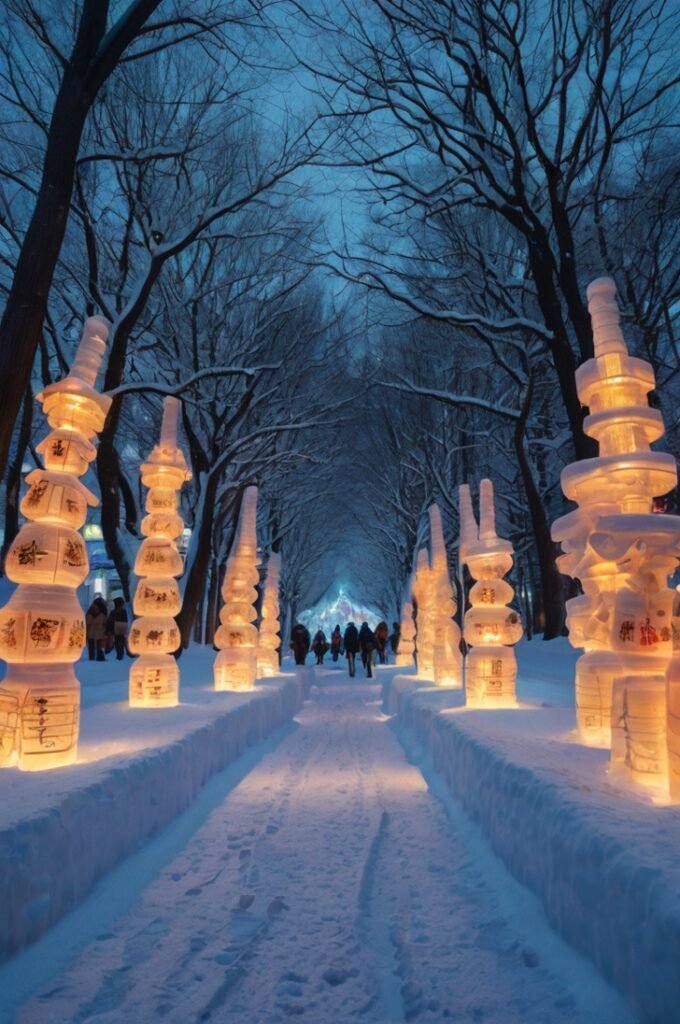
These festivals not only highlight the artistic ingenuity of Japanese culture but also showcase traditional performances that deepen visitors’ appreciation for the local customs. Attending these winter events allows travelers to experience the festive spirit of Japan, where both the beauty of nature and the joy of community come together. With snow blanketing the landscape, these celebrations provide a unique and memorable glimpse into the heart of winter in Japan.



Winter Illumination and Night Views
Japan’s winter season transforms its urban landscapes into magical wonderlands, particularly through the mesmerizing phenomenon of winter illuminations. These displays, featuring millions of twinkling lights, have become a cherished highlight for both locals and travelers alike, captivating audiences with their vibrant artistry. Notable cities such as Tokyo, Yokohama, and Kobe are renowned for their spectacular illuminations, each offering unique experiences that draw visitors from around the globe.
In Tokyo, one can witness the stunning illuminations at various locations, including the famous Shinjuku Gyoen National Garden, where light installations create an enchanting atmosphere. Additionally, the streets of Shibuya and Omotesando sparkle with intricate LED displays, turning these bustling areas into picturesque nightscapes. The annual “Tokyo Illumination” event showcases creative presentations that often feature music synchronized with the lights, providing an unforgettable experience for those who attend.




Yokohama, just a short train ride from Tokyo, boasts one of the most impressive winter illumination events in Japan. The “Yokohama Minato Mirai” area features a breathtaking display known as “Yokohama Sparkling Twilight,” where countless lights adorn palm trees and buildings. This dazzling display is best viewed during the early evening when the city skyline is aglow, creating a striking contrast with the dark winter sky. Additionally, the iconic Yokohama Red Brick Warehouse often hosts special light shows that enhance the festive atmosphere.
Kobe also deserves mention for its stunning winter illuminations, particularly at the famous “Kobe Luminarie” festival. Originally established to commemorate the Great Hanshin Earthquake, this event features elaborate light installations that illuminate the city’s streets in a captivating manner. Attendees can stroll through stunning arches of lights and enjoy festive performances, making it a memorable activity during the winter months.
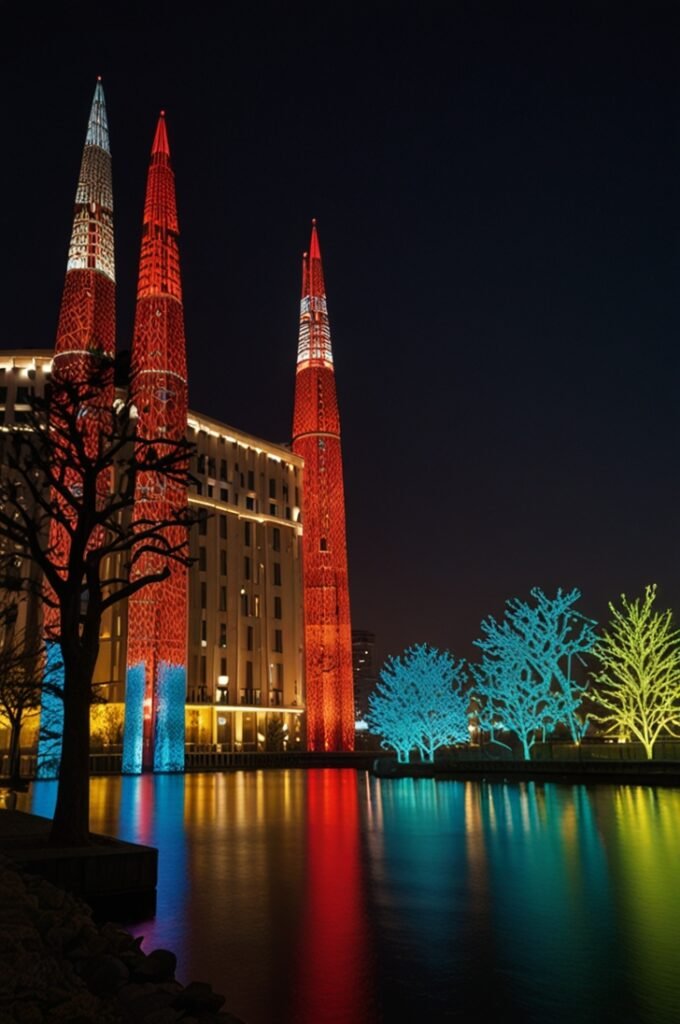



For the best experiences, visitors are encouraged to check local event schedules, as many of these illuminations typically run from late November through February. Early evenings tend to provide the best view, ensuring that attendees can fully appreciate the artistry involved in these enchanting displays.



Cultural Experiences Unique to Winter
Winter in Japan presents a tapestry of cultural experiences that are distinct and deeply rooted in the nation’s traditions. As the snow blankets vast landscapes, various regions celebrate this season through unique customs that reflect the cultural heritage of their locality. One of the most prominent aspects of winter in Japan is the celebration of festivals, such as the famous Sapporo Snow Festival. Held annually in Hokkaido, this festival showcases stunning ice sculptures and attracts visitors from around the globe. The intricately crafted snow statues reflect not only artistic expression but also the communal spirit that characterizes many Japanese winter events.
Another significant cultural practice during winter is the preparation and enjoyment of seasonal foods. Restaurants and households across Japan feature distinct winter dishes, emphasizing warmth and comfort. Regional specialties, such as ‘nabe’ (hot pot) meals, are a common choice, allowing families and friends to gather around the table, enjoying both the food and each other’s company. This practice embodies the Japanese values of togetherness and seasonal appreciation, elevating winter meals to a cultural celebration.

Moreover, many areas participate in traditional winter crafts that have been passed down through generations. Local artisans use materials reflective of the season to create unique items. In regions like Shirakawa-go, the gassho-zukuri style of farmhouses is not just a shelter but a symbol of craftsmanship, particularly beautiful in winter’s snow-draped scenery. Similarly, winter also brings an opportunity for communities to partake in spiritual practices associated with the new year, including shrine visits and various rituals aimed at bringing good fortune.
Through these vibrant festivals, delicious seasonal cuisine, and remarkable artisan crafts, winter in Japan encapsulates an array of cultural experiences that are particularly significant during this magical season. Each aspect uniquely celebrates the beauty and spirit of Japan in winter, making it a season worth exploring.


Practical Tips for Winter Travel in Japan
Traveling to Japan during the winter season presents unique opportunities to experience the country’s stunning landscapes and vibrant culture. However, preparation is key when navigating the colder months. First and foremost, packing appropriately for winter weather is essential. Layering clothing is highly recommended, as temperatures can vary significantly depending on the region. Thermal undergarments, warm jackets, hats, gloves, and waterproof boots will ensure that travelers remain comfortable while exploring both urban and rural areas.
Understanding the transportation network in Japan is crucial for a smooth travel experience. The country’s extensive train system, including the Japan Rail Pass, provides efficient travel between major cities. However, during winter, it is advisable to check for any weather-related disruptions, particularly in regions prone to heavy snowfall, such as Hokkaido and the Japanese Alps. Buses are also a reliable alternative for reaching more remote areas. When navigating public transit, be mindful of the schedules, as some lines may operate less frequently during the winter months.



The climate can differ greatly from one region to another in Japan. For instance, while Tokyo experiences milder winters, Sapporo is known for its heavy snowfall. Researching the climate specific to your destination will help in planning activities. If winter sports such as skiing or snowboarding are of interest, renowned resorts like Niseko offer unmatched experiences. Safety should remain a priority; familiarize yourself with the local emergency protocols and ensure that you have the proper equipment, especially for activities in snowy areas.
By adequately preparing for Japan’s winter conditions and understanding the regional variations, travelers can fully enjoy this magical season, making unforgettable memories in one of the world’s most picturesque destinations.


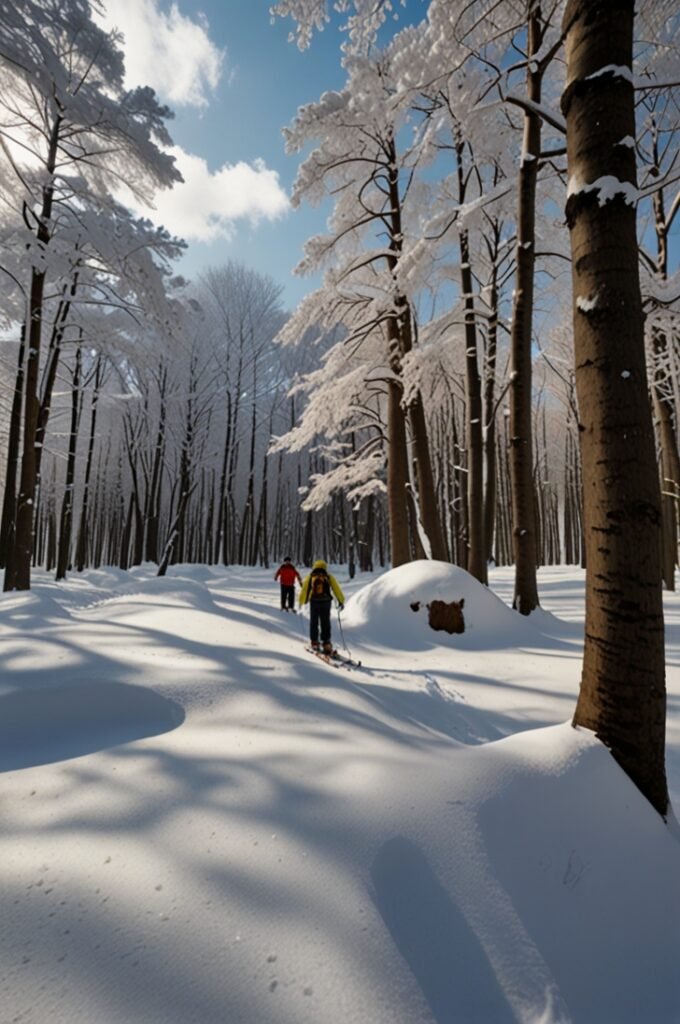
Conclusion: Embrace the Beauty of Winter in Japan
The winter season in Japan offers a unique canvas of beauty, transforming landscapes into breathtaking panoramas and showcasing a rich tapestry of culture and tradition. From the serene snow-covered streets of Kyoto to the vibrant winter festivals in Hokkaido, Japan presents an enchanting atmosphere that captivates travelers and locals alike. The charm of a traditional onsen (hot spring) amidst a frosty backdrop adds an element of relaxation and warmth, inviting individuals to pause and appreciate the serene ambiance that winter envelops.
Exploring Japan during this season provides a vibrant mix of experiences, such as skiing in the renowned resorts of Nagano or savoring the delectable seasonal cuisines found in local restaurants. The glowing lights of winter illuminations create magical sceneries that entice nocturnal wanderers and foster a sense of community and joy, further enriching the travel experience. However, it is not just the breathtaking landscapes and delightful food that beckon adventurers; it is the deeply rooted customs and traditions that resonate profoundly, offering an authentic glimpse into the heart of Japanese culture.



Thus, every traveler is encouraged to embrace the beauty of winter in Japan. Whether participating in a lively ice festival, tasting seasonal delicacies, or simply enjoying the peacefulness of a snowy evening, each moment holds the potential for unforgettable memories. The magic of Japan’s winter serves as an invitation to all who seek to explore, discover, and immerse themselves in its qualities. By embarking on this seasonal journey, individuals can reveal new perspectives and sentiments, making winter travel in Japan an experience that lingers in one’s heart long after the journey concludes.


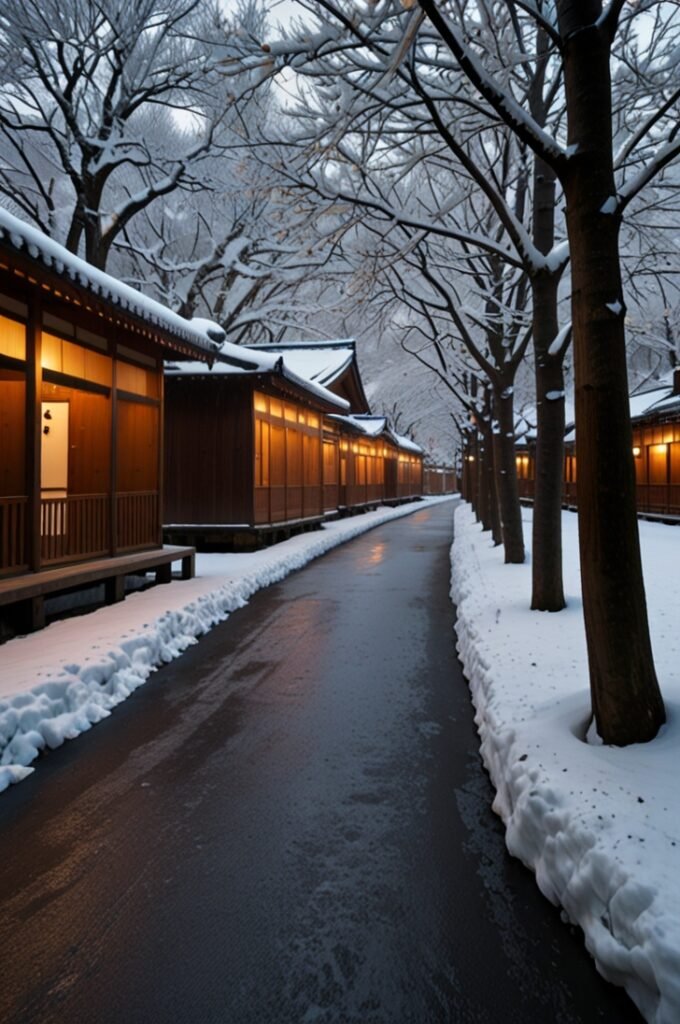
RELATED POSTS
View all


